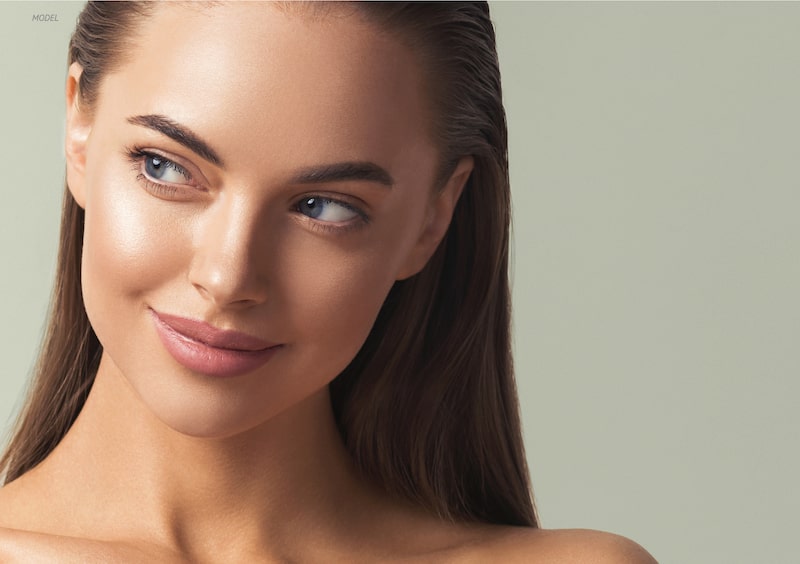4 Minute Read:
All forms of plastic surgery require an artistic touch combined with unmatched surgical skill. However, this is often required more with rhinoplasty (nose surgery) than any other surgical technique.

Rhinoplasty is a surgery of millimeters, and it is often considered one of — if not the most — complicated plastic surgery procedures to perform.
This is due to many reasons.
First, as the center point of your face, your nose influences all of your surrounding facial features and provides your face with a look that is specific only to you. Beyond that, your nasal structure consists of multiple elements, including skin, cartilage, bone, muscles, nerves, and blood vessels. These all work together to create your nasal aesthetic and allow you to breathe with ease through the structure.
Is There a Risk to Undergoing Rhinoplasty?
Even though rhinoplasty is challenging to perform, a well-done nose surgery provides some of the most significant, beautiful, and life-changing results. Unfortunately, there is a possibility that the results of your initial rhinoplasty will not match what you anticipated.
While it would be easy to blame it on your plastic surgeon, that is not always the case. Even a perfectly executed rhinoplasty can result in lackluster results; this is because there is no guarantee of the way your nose will heal.
The most you can do is choose a skilled, board-certified plastic surgeon like Dr. Shahriar Mabourakh, with a long track record of successful rhinoplasty procedures.
What Can Contribute to Good Initial Rhinoplasty Results?
Rhinoplasty is a very delicate surgery that should only be conducted by a qualified plastic surgeon with the right combination of surgical skill and artistic vision to achieve a naturally beautiful nose.
Because of the intricate nature of this treatment, many pieces must fit together for truly transformative results.
First is your surgeon selection. Sadly, an inexperienced rhinoplasty surgeon can make minor miscalculations that lead to a fairly significant impact in your aesthetic results and/or breathing ease. This is not expected with a skilled, well-trained surgeon. An experienced rhinoplasty understands every aspect of nasal anatomy and knows how to make adjustments, how these adjustments work together, and how to deal with any complications that may arise during the procedure.
Unforeseen healing irregularities can occur during the recovery process due to the fault of no one. To help ensure this doesn’t happen, it is important to carefully follow the prescribed postoperative care regimen. This includes attending all of your follow-up visits.
Finally, achieving beautiful rhinoplasty results starts with having a clear picture (and realistic expectations) of the look you desire.
Will I Need a Revision Rhinoplasty?
If you are unhappy with the results of your rhinoplasty, you may be a candidate for revision rhinoplasty. This secondary surgery provides subtle or dramatic alterations to a previously worked-on nose.
Revision rhinoplasty is performed to improve aesthetics, functionality, or both.
I’m Not Happy With My Initial Nose Job. Now What?
Revision rhinoplasty is far more challenging than the initial procedure. This is because there is scar tissue formation and changes in the bone and cartilage from the first procedure, which tasks your surgeon with complex conditions to operate.
For this reason, patients should only work with an expert surgeon who is familiar with the complexities of the surgery. Revision rhinoplasty requires the artistic skill of a sculptor who understands all the nuances of the facial and nasal structure.
Like a primary rhinoplasty procedure, revision rhinoplasty is performed through an open or closed approach. A closed approach is used for minimal reshaping and contouring, while the open technique is required for more extensive correction or structural changes. Dr. Mabourakh will determine which technique to use depending on the nose’s underlying structure and the changes to be made.
The procedure will, in most cases, require cartilage for structural support for the tip or bridge of the nose, especially when too much cartilage was removed during the first rhinoplasty.
Interested in Revision Rhinoplasty? Learn More Today!
If you are unhappy with your previous rhinoplasty result, Dr. Mabourakh can perform revision rhinoplasty to correct and refine your nasal structure. Contact us at 916-984-8585 or fill our online form to schedule your consultation.


